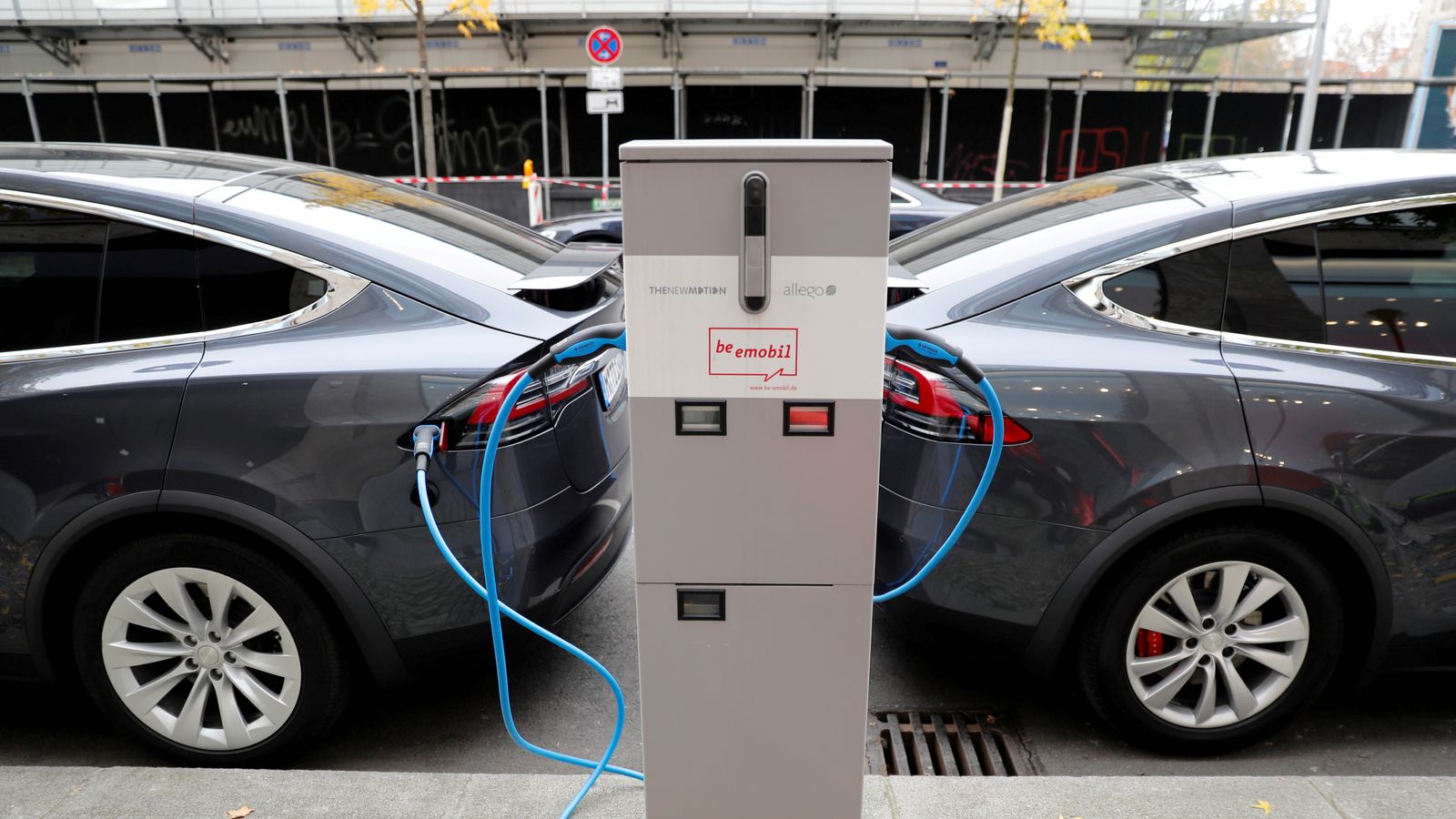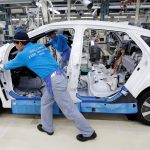The pivot to electric vehicles and away from the internal combustion engine is not only causing big costs to car manufacturers.
It also poses a challenge to those who supply carmakers as they, too, are required to pivot away from decades-old forms of technology.
One such business is Johnson Matthey, the FTSE-100 sustainable technologies business, whose Clean Air division supplies equipment that filters out polluting emissions from car engines. Its emission control systems are found in around one in three cars sold worldwide.
Please use Chrome browser for a more accessible video player
Weaker demand from carmakers during last year’s coronavirus lockdowns hit that part of the company and was the main reason why JM today reported a 22% drop in pre-tax profits, to £238million, for the year to the end of March. Another was the cost of making around 2,000 employees, including around 600 in the UK, redundant as the business sought to cut costs.
However, Robert MacLeod, the chief executive, insisted demand in Clean Air had already begun to recover during the second half of that period.
He told Sky News: “If you look at the numbers we had a difficult first half, but it recovered really strongly in the second half. And the momentum has carried into the start of this year, but over the next decade, we will generate about for at least £4bn of cash for marketing our business as that market matures grows in the short term but continues to mature, so it’s a really strong business.”
This may go some way to allay the concerns of investors – who have been concerned about the need for JM to maximise profits from its Clean Air business to support the heavy investment required as the company shifts to supplying components for electric vehicle batteries.
Mr MacLeod added: “What we’ve got to do is carry on demonstrating to shareholders how we’re running our existing businesses really well and how at the same time we’re investing in growth businesses and we need to. We’re doing that at the moment – and what the investors need to see is that growth in those new opportunities, whether it be battery materials or hydrogen, and those are the two areas that we’re particularly investing in at the moment, along with other low carbon chemical process investments as well.”
And there is no doubt that there are opportunities being created.
It has been reported that the Japanese car-making giant Nissan is in talks with the UK government about the possibility of building the country’s largest giga factory to build electric vehicle batteries in Sunderland. The plant under question would support the production of 200,000 electric cars annually – which would make the UK Nissan’s biggest site for electric vehicle production outside Japan.
The 500,000th Nissan Leaf rolled off the production line in Sunderland in September last year and moving battery production to the UK would mean Nissan avoids incurring tariffs on the Leaf, nearly three-quarters of which are exported, when being sold to customers in the EU.
Mr MacLeod said he was encouraged by the news from Nissan: “I think it really starts to show the development of the batteries ecosystem here in the UK but more broadly in Europe – and that does give us confidence to continue to invest in our battery materials plants which are raw material supplies into these Giga factories.”
JM has developed a technology called eLNO (enhanced lithium nickel oxide) – a type of cathode material that, when incorporated into the design of an electric car battery, significantly improves its efficiency by increasing the amount of power it delivers and by extending its life. It is already planning to begin production in Poland next year and recently announced plans to open a second plant in Finland.
To that end, it recently completed a supply deal with the Russian mining giant NorNickel to source nickel and cobalt.
Mr MacLeod added: “It’s just being able to demonstrate to our customers that not only do we have our plans to manufacture the cathode material in Poland and in Finland but also we’ve got security of supply of those critical raw materials – nickel, cobalt and lithium – the materials that go into cathode. Our customers want to make sure that we have security of supply and this gives them even more confidence in us.”
NorNickel has recently been accused of being the worst polluter in the Arctic.
Asked whether involvement with NorNickel might lead to criticism of JM’s environmental, social and governance policies from shareholders, Mr MacLeod replied: “I think it’s better, sometimes, to be on the inside and work with them to develop work on how we can reduce their emissions. We know our customers, the OEMs (original equipment manufacturers), the cell manufacturers, as well as us, will all be working with NorNickel and all the other suppliers to reduce the emissions and improve the sustainability of all elements of the raw materials and the manufacturing processes.”
To these investments can be added a hefty outlay on hydrogen technologies. JM announced earlier this week that it is to partner with the Nasdaq-listed alternative energy technology specialist, Plug Power, to develop electrolyser technology that uses hydrogen as a fuel source. In all, JM expects to invest £600million this year on “strategic growth projects” and regular capital expenditure, chiefly on battery materials and also on hydrogen activities.
Mr MacLeod said: “[Hydrogen] is a really exciting opportunity, as well as the battery materials, as we’re pivoting away [from fossil fuel technology] – and sustainability makes JM more relevant than ever before in the push for addressing climate change. So hydrogen is really exciting, We’ve already got 100 million of sales in our hydrogen business, and it makes money.
“And we’re investing not huge capital, because it doesn’t need huge capital in that area, but we are investing a lot and we’d expect that business to be, you know, several hundred million by 2025 and then growing beyond that.”
JM, which also has a significant business processing platinum and palladium, has set out its roadmap to manage the transition away from fossil fuels to supporting new technology.
The challenge for this 204-year old company will now be to deliver on those plans – and convince some sceptics among its shareholder base that its future can be at least, if not more, profitable, than its storied past.






















